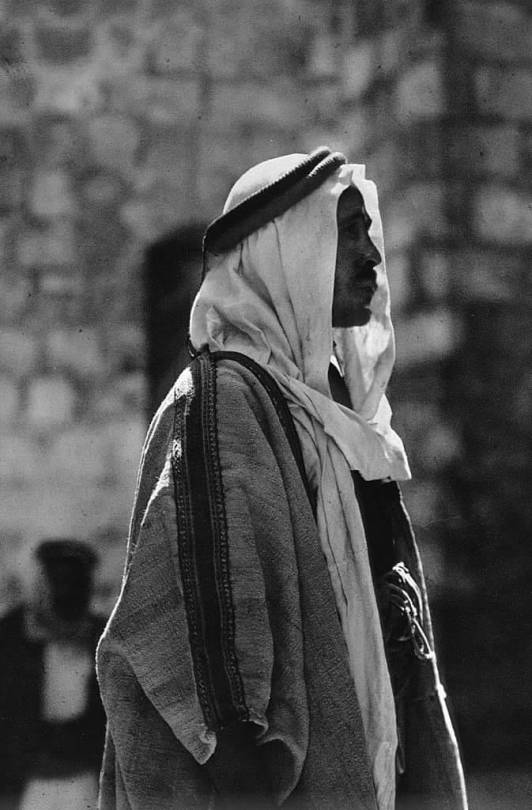Is Takween Truly A Threat To Islam?
Is Takween truly a threat to Islam?
For the non-Arabic speakers, Takween is a new show hosted in Egypt by a bunch of secular thinkers like Ibrahim Essa, Islam Beheiry and others. This show mainly tackles topics related to Islamic studies such as the interpretation of the Quran, the validity of the Islamic Hadith and other things I may not be aware of.
Surely, a show like this sparked an outrage in the Islamic society here in Egypt, since the majority of Egyptians refuse having a platform that enjoys different opinions and perspectives on religious beliefs.
They express their disapproval by accusing those thinkers of being apostates and calling for cancelling the show and their arrest. Of course, those so-called moderate muslims claim that they say so as a way to protect society from negative ideas that plant doubts in vulnerable muslim minds.
But the real question is, is planting doubt truly a bad thing? Is it really bad to reconsider ideas you always took for granted and believed in without a shadow of a doubt? It is you who should decide this.
More Posts from S-afshar and Others
The Battle of Kadesh: Part II - The Stakes
The aftermath of the battle of Kadesh might have changed the future of history forever. We simply don't know how the end of the bronze age would have played out if this didn't end the war between Egypt and the Hittites. Perhaps if the Hittites won more of Canaan they would have endured the natural disasters that destroyed anatolia? Perhaps if Egypt conquered more they would have the resources to stop the neo-assyrians world domination speed run? How would the world look if the egyptians instead went on a world domination speed run instead of the persians? This shit mattered and I'm not gonna be told otherwise.
On the surface these stakes were the ownership of an unimportant town and moving the border a few hundred feet north or south, not so important after all even so what the actual battle led to was in fact very important. Even though the ownership of Kadesh had long been a symbolic one, when either the Egyptians or the Hittites owned Kadesh it showed the other side who was “winning” their ancient beef. Kadesh was undoubtedly a propaganda target.
The aftermath would lead to the first surviving recorded peace treaty and formed an important defensive alliance creating precedence for all those to come in the millenia after. Who knows if it mattered but either way the first known peace treaty feels important to talk about. The battle of Kadesh was not the sole reason for the peace treaty, Egypt was feeling threatened by the infamous “Sea peoples” that were part of the late bronze age collapse and Egypt was quite satisfied with a propaganda victory to wrap up their long war with the Hittites and even happier to get some help from the Hittites if they the sea peoples were to invade en masse.

*The Egyptian Version of the peace treaty at the precinct of Amun-Re*

*The Hittite version of the peace treaty which is displayed at the museum of the ancient orient in Turkey*

*A third Akkadian version of the peace treaty between Ramesses II and Ḫattušili III, mid-13th century BCE. Neues Museum, Berlin
Note: Yes, military alliances existed earlier but are poorly recorded. This was the first surviving peace treaty. The Hitties did even have an alliance with the Mitanni but in our very fractured understanding of the bronze age it's hard to tell what can be considered an alliance, a vassal state or whatever else. The Mitanni were pretty interesting in this regard too, I might cover the battle of Megiddo, Thutmose III’s campaign and the Mitanni’s empire at some point in the future.

COMPUTER ENHANCE

GOLD CAPPED SCHMEAT!!!!!








Rare photos for the Capital of Palestine - Alquds 1920 which is 29 years before the born of the Israeli occupation.

Painted tile. Iran. 19th Century CE.
Wadsworth Atheneum Museum of Art.


Here we fucking go. No space for hesitation this time, lads - we break the English connection now or never.
Το Πλοίο του Σουλεϋμάν – Εισαγωγή
Stohastis Publishing House, 1993
The Ship of Suleyman – Safinah-i Sulaymani / سفینه سلیمانی Introduction of the Greek edition of The Ship of Suleyman / Book review:
https://www.academia.edu/23396049/Safina_i_Sulaymani_Shah_Sulaymans_diplomatic_missions_deeds_in_Thailand_edition_M_S_Megalommatis Αυτό το κείμενο αποτελεί την Εισαγωγή της νεοελληνικής έκδοσης του συγγραφέντος από τον Ιμπν Μουχάμαντ Ιμπραήμ κειμένου – αναφοράς για τα πεπραγμένα της αποστολής στην οποία αυτός είχε συμμετάσχει. Ο Μουχάμαντ Ράμπια Ιμπν Μουχάμαντ Ιμπραήμ (محمد ربیع بن محمد ابراهیم/Muhammad Rabi` ibn Muhammad Ibrahim) ήταν ο επίσημος σαφεβιδικός γραφέας της αυτοκρατορικής αποστολ΄ής στο Σιάμ (Ταϋλάνδη). Υπέβαλε την αναφορά του αυτή στον Σάχη Σουλεϋμάν και ακριβώς γι’ αυτό ο τίτλος κάνει λόγο για το Πλοίο του Σουλεϋμάν. Ο Σάχης Σουλευμάν βασίλευσε από το 1668 έως το 1694. Η αποστολή στο Σιάμ ανεχώρησε την 27η Ιουνίου 1685 από το Μπαντάρ Αμπάς (ένα από τα λιμάνια του Ι΄ράν στον Περσικό Κόλπο) και επέστρεψε την 14η Μαΐου 1988. Η μετάφραση έγινε από την αγγλική έκδοση του John O’Kane, The ship of Sulaiman [by ibn Muhammad Ibrahim], London, Routledge & K. Paul [1972]. Η νεοελληνική έκδοση ακολουθεί την αγγλική στην διάρθρωση του κειμένου σε εισαγωγή, τέσσερα κεφάλαια (‘μαργαριτάρια’) και επιμύθιο. Είναι αναλυτικά σχολιασμένη και επεξηγημένη από τον μεταφραστή. Κυκλοφόρησε ως βιβλίο στις εκδόσεις Στοχαστής το 1993 (368 σελίδες). Το χειρόγραφο βρίσκεται στο Βρεταννικό Μουσείο. Περισσότερα για την αγγλική έκδοση: https://catalogue.nla.gov.au/Record/496059 Σχετικά με το θέμα (σε φαρσί): https://fa.wikifeqh.ir/سفینه_سلیمانی_(کتاب)
Εδώ μπορείτε να κατεβάσετε μία από τις ιρανικές εκδόσεις (σε φαρσί): asmaneketab.ir/product/کتاب-سفینه-سلیمانی-محمدربیع-بن-محمداب/ Εκδόσεις Στοχαστής, Αθήνα 1993 - Stohastis Publishing House, Athens 1993













“The Temple of Ramesses III at Medinet Habu was an important New Kingdom period temple structure in the West Bank of Luxor in Egypt. Aside from its size and architectural and artistic importance, the mortuary temple is probably best known as the source of inscribed reliefs depicting the advent and defeat of the Sea Peoples during the reign of Ramesses III.” [X]

Palmyra. Temple of Baal. Main entrance showing engaged fluted columns.
Learn more / Daha fazlası https://www.archaeologs.com/w/palmyra/
Ο Μπαχράμ Γκουρ σκοτώνει τον δράκοντα – ένα επικό-μυθικό στοιχείο στην Ιστορία της Ισλαμικής Τέχνης της Ασίας





===========

Η Ιστορία του Καυχησιάρη που πνίγηκε στο πηγάδι

Η Ιστορία του ανθρώπου που κρυφάκουγε



Cosmas Megalommatis, Gilgamesh - World Mythology, 1989
Κοσμάς Μεγαλομμάτης, Γκιλγκαμές: Παγκόσμια Μυθολογία, Ελληνική Εκπαιδευτική Εγκυκλοπαίδεια, 1989
Кузьма Мегаломматис, Гильгамеш: мировая мифология, Греческая педагогическая энциклопедия, 1989
Kosmas Megalommatis, Gilgamesch: Weltmythologie, Griechische Pädagogische Enzyklopädie, 1989
Kosmas Gözübüyükoğlu, Gılgamış: Dünya Mitolojisi, Yunan Pedagoji Ansiklopedisi, 1989
قزمان ميغالوماتيس، گیلگمش : اساطیر جهانی، دایره المعارف آموزشی یونانی، 1989
Côme Megalommatis, Gilgamesh: Mythologie mondiale, Encyclopédie pédagogique grecque, 1989
1989 قزمان ميغالوماتيس، جلجامش: الأساطير العالمية، الموسوعة التربوية اليونانية،
Cosimo Megalommatis, Gilgameš: mitologia mondiale, Enciclopedia pedagogica greca, 1989
Cosimo Megalommatis, Gilgamesh: mitología mundial, Enciclopedia pedagógica griega, 1989
Cosmas Megalommatis, Gilgamesh: World Mythology, Greek Pedagogical Encyclopedia, 1989



Скачать PDF-файл: / PDF-Datei herunterladen: / Télécharger le fichier PDF : / PDF dosyasını indirin: / :PDF قم بتنزيل ملف / Download PDF file: / : یک فایل دانلود کنید / Κατεβάστε το PDF:




-
 selcblog liked this · 6 months ago
selcblog liked this · 6 months ago -
 s-afshar reblogged this · 7 months ago
s-afshar reblogged this · 7 months ago -
 eluemina-9 reblogged this · 10 months ago
eluemina-9 reblogged this · 10 months ago -
 eluemina-9 liked this · 10 months ago
eluemina-9 liked this · 10 months ago -
 vanille-puss liked this · 1 year ago
vanille-puss liked this · 1 year ago -
 section-69 liked this · 1 year ago
section-69 liked this · 1 year ago -
 egyptianrenaissance reblogged this · 1 year ago
egyptianrenaissance reblogged this · 1 year ago
